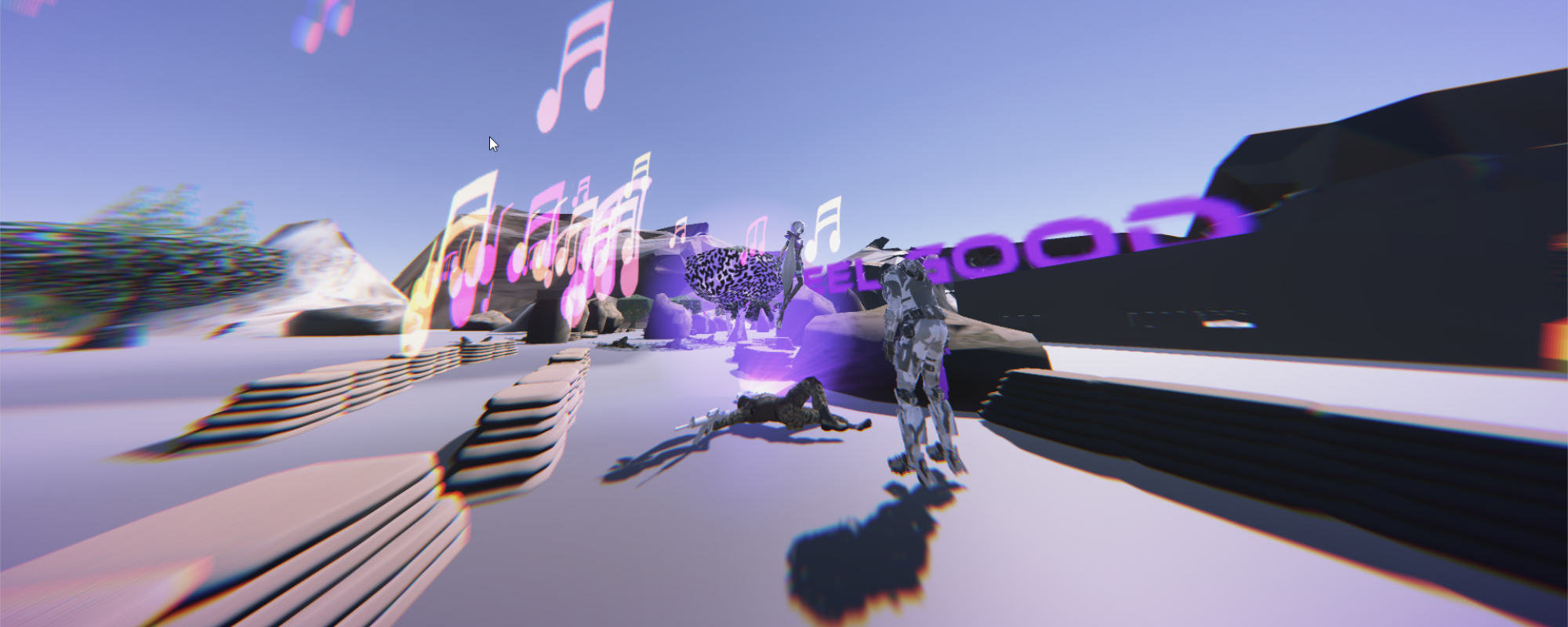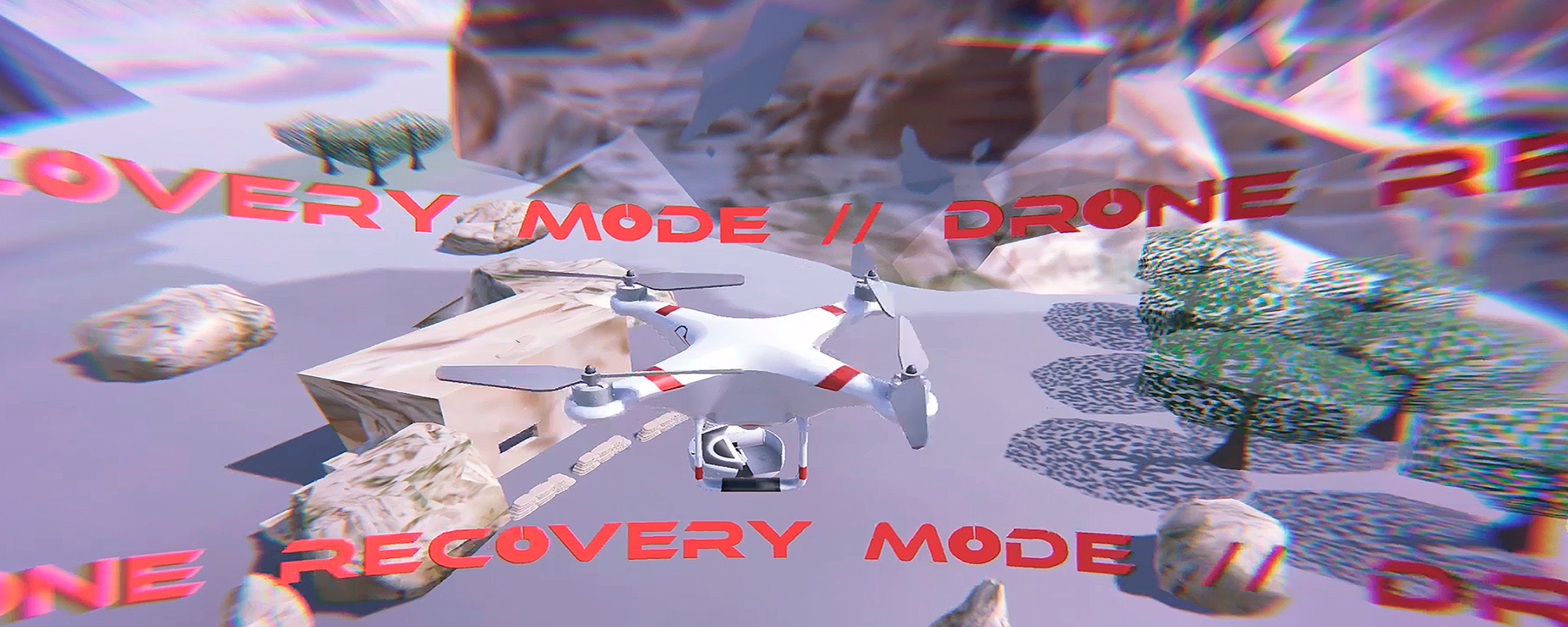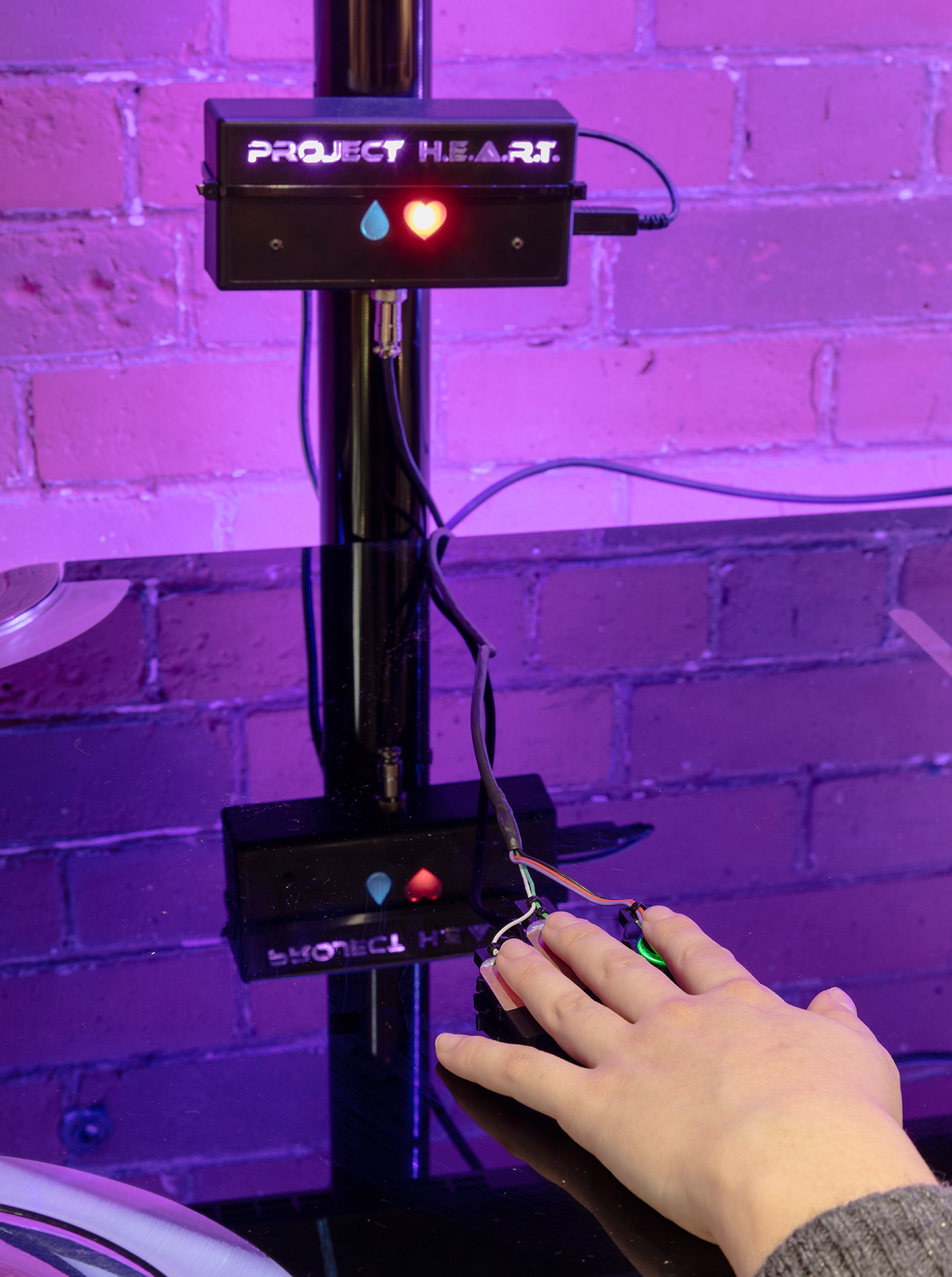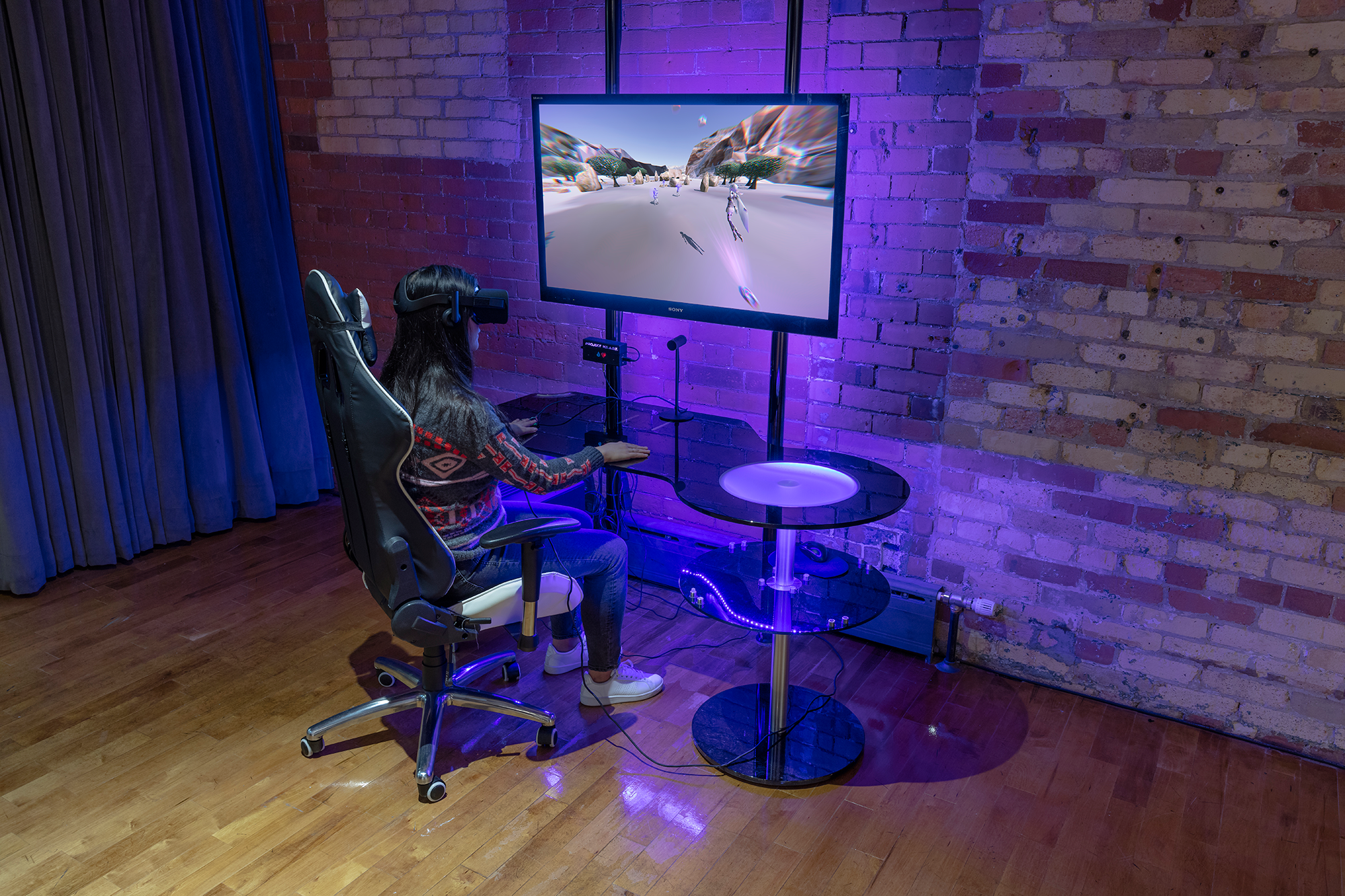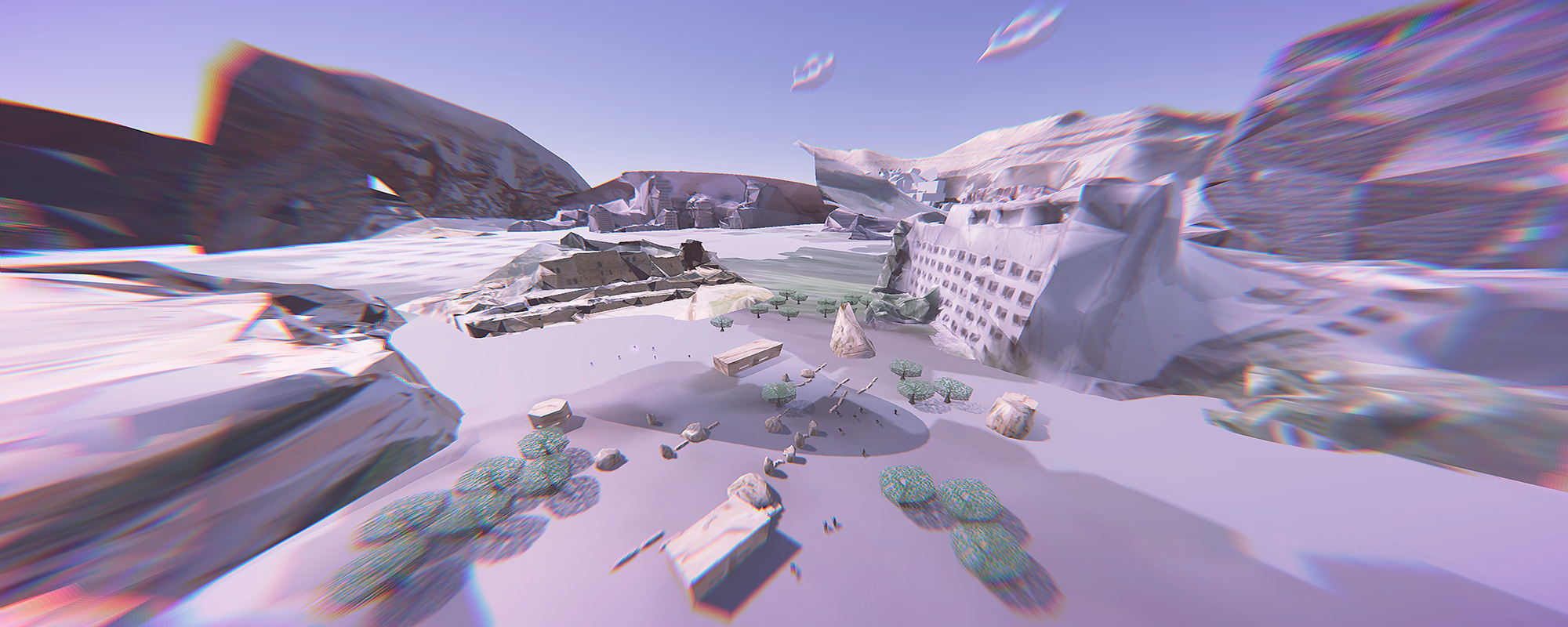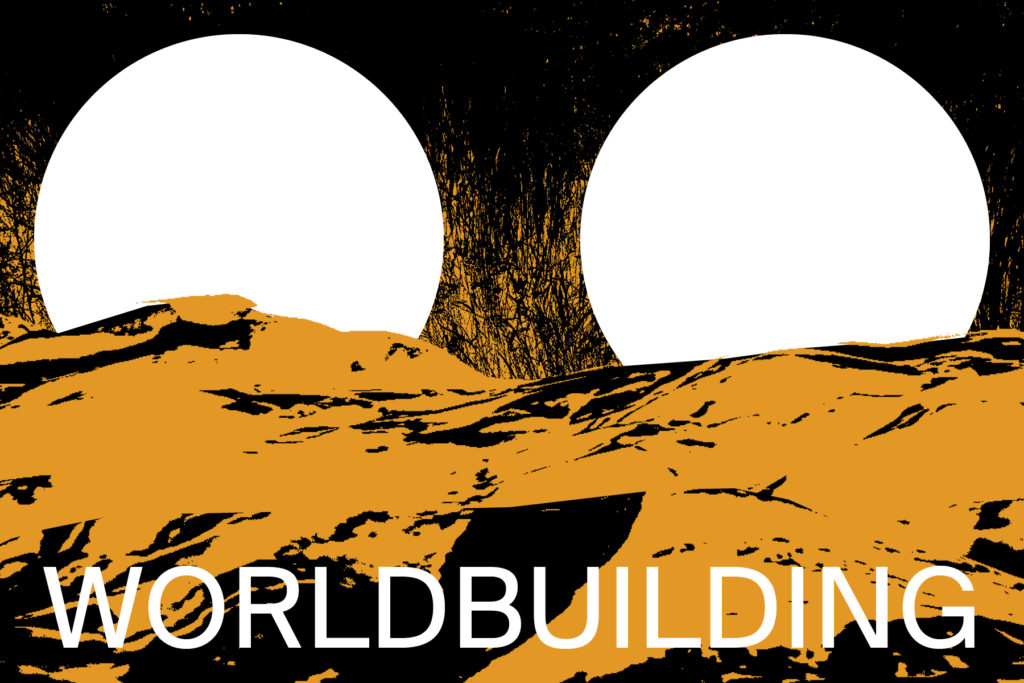
Project H.E.A.R.T. was debuted on November 5th at Trinity Square Video, Toronto.
This project was commissioned by Trinity Square Video thanks to curators John Hampton and Maiko Tanaka, as well as the support of AMD computing and the Canada Council for the Arts. The commission also features works by Canadian artists Jeremy Bailey and Kristen Schaffer, Eshrat Erfanian, and Yam Lau.
The Worldbuilding exhibition took place November 3rd – December 9th 2017 at Trinity Square Video, 401 Richmond, Toronto Canada. From the curators:
“As new virtual technologies begin to flood the popular consciousness via gaming, experience design, journalism, and healthcare industries, they are accompanied by claims that immersive, 360° and 3D environments create more authentic experiences of “presence”. On the one hand they claim the technology can cultivate real empathy for the experiences of others, and on the other, they enhance the resolution of militaristic ways of seeing and “voyeurism without consequence.” The artists in Worldbuilding bring a critical eye to this rhetoric emerging alongside the technology. Through the building of alternate versions of the worlds in which popular VR experiences currently exist, the artists exaggerate, undermine, and push the limits, of the claims of VR’s empathetic and experiential potential, in subtle, hilarious and re-embodying ways.
Curated by John G. Hampton and Maiko Tanaka, Worldbuilding invites audiences to experience four virtual installations in an exhibition that plays with the rules of engagement that immersive technologies are designed from. Opening with a reception on November 3rd 2017 at 6pm, the exhibition provides opportunities to hear from the artists and curators themselves with panel presentations on November 4th and December 9th.”
Worldbuilding was declared a “must-see” show by Canadian Art magazine!
For more information, visit the Worldbuilding website by clicking here.
